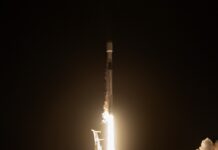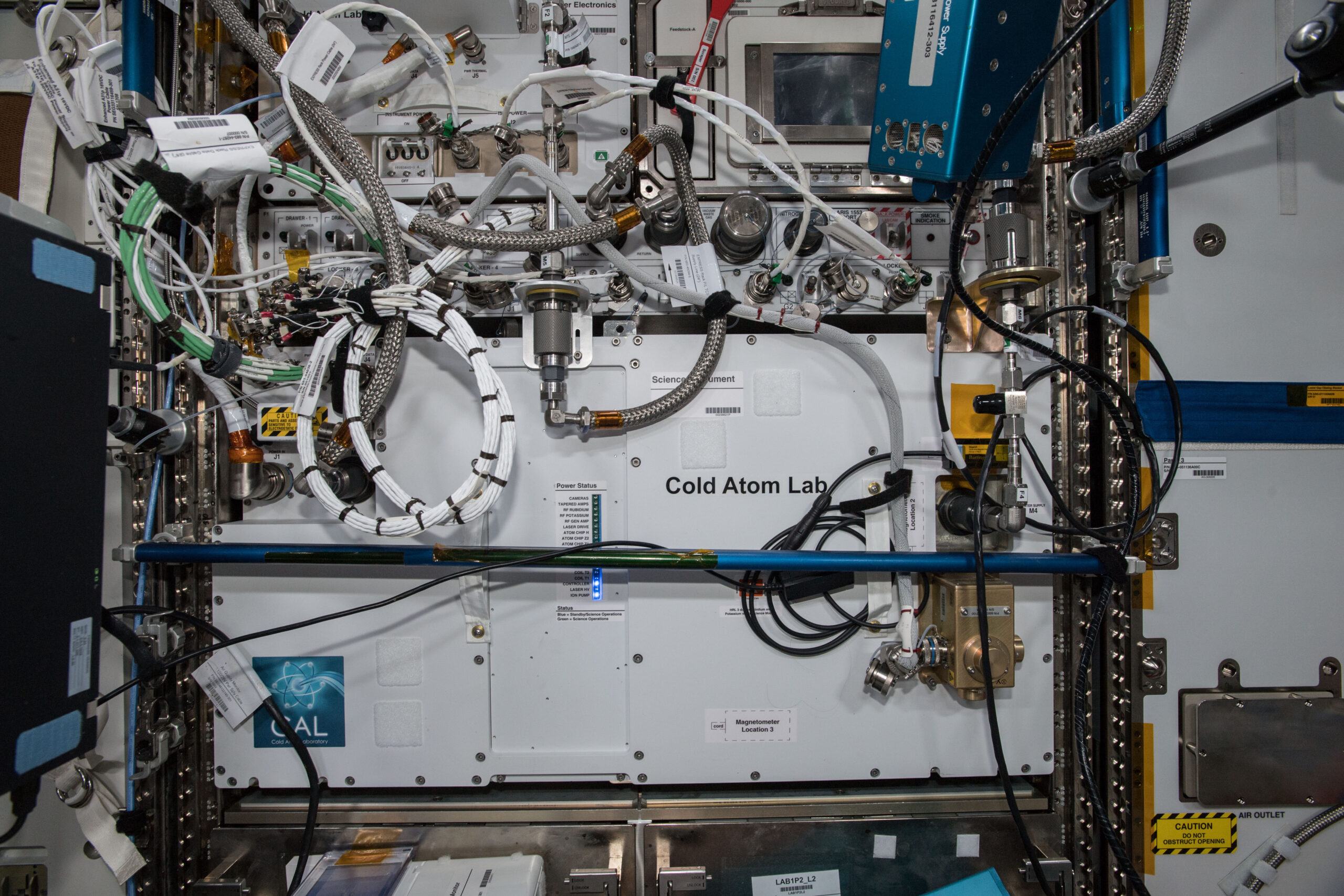Revolutionizing Space Exploration with Quantum Technology: NASA’s Cold Atom Lab Achieves Major Milestones
Future space missions may soon benefit from quantum technology in tracking Earth’s water, exploring moons and planets, and probing enigmatic cosmic phenomena. NASA’s groundbreaking Cold Atom Lab, housed on the International Space Station (ISS), has achieved a significant milestone in this direction. This first-of-its-kind facility has successfully utilized ultra-cold atoms to measure subtle vibrations of the space station, marking a pioneering application of quantum science in space.
Unveiling the Cold Atom Lab’s Achievements
Published in the August 13 edition of Nature Communications, the study details the longest demonstration of atoms’ wave-like behavior in freefall in space. This achievement underscores the Cold Atom Lab’s potential to revolutionize quantum science applications beyond Earth’s confines.
The Cold Atom Lab team employed a quantum tool known as an atom interferometer for their measurements. This device can precisely gauge gravity, magnetic fields, and other forces. On Earth, atom interferometers are used to understand gravity’s fundamental nature and to enhance technologies crucial for aircraft and ship navigation. While numerous technologies, including cell phones, transistors, and GPS, leverage quantum science, atom interferometry represents a more advanced and precise application.
Why Space?
Physicists have long been eager to test atom interferometry in space. The microgravity environment of space allows for extended measurement periods and enhanced instrument sensitivity. However, the delicate nature of the equipment has posed challenges for prolonged, unsupervised operation. The Cold Atom Lab, operated remotely from Earth, has now proven it is feasible to use these sensitive tools in space.
"Reaching this milestone was incredibly challenging, and our success was not always a given," said Jason Williams, Cold Atom Lab project scientist at NASA’s Jet Propulsion Laboratory (JPL) in Southern California. "It took dedication and a sense of adventure by the team to make this happen."
Potential Applications of Space-Based Quantum Sensors
High-precision gravity measurements from space-based sensors could have numerous applications. For instance, they could unveil the composition of planets and moons within our solar system. Different materials have distinct densities, leading to subtle variations in gravity that such sensors can detect.
One existing example of this type of measurement is the U.S.-German collaboration known as GRACE-FO (Gravity Recovery and Climate Experiment Follow-on). This mission tracks water and ice movement on Earth by detecting minor changes in gravity. An atom interferometer could enhance this precision, providing more detailed insights into surface mass changes.
Moreover, precise gravity measurements could contribute to our understanding of dark matter and dark energy, two of the most perplexing cosmological mysteries. Dark matter, an invisible substance, is believed to be five times more prevalent in the universe than the regular matter we can observe. Dark energy, on the other hand, is thought to drive the universe’s accelerating expansion.
"Atom interferometry could also be used to test Einstein’s theory of general relativity in new ways," said Cass Sackett, a professor at the University of Virginia and a principal investigator for the Cold Atom Lab. "This is the basic theory explaining the large-scale structure of our universe, and we know that there are aspects of the theory that we don’t understand correctly. This technology may help us fill in those gaps and give us a more complete picture of the reality we inhabit."
Understanding the Cold Atom Lab
NASA’s Cold Atom Lab studies the quantum characteristics of atoms—the fundamental building blocks of our universe—in the unique environment of the ISS. Launched in 2018, this lab aims to advance quantum science by utilizing the microgravity conditions of low Earth orbit. The lab cools atoms to near absolute zero, achieving temperatures as low as minus 459 degrees Fahrenheit (minus 273 degrees Celsius). At these extreme temperatures, atoms can form a Bose-Einstein condensate, a state of matter where atoms share the same quantum identity. This state makes their typically microscopic quantum properties more observable and easier to study.
Quantum properties include acting like particles and waves under different conditions. Scientists seek to understand this dual behavior and transition by using advanced quantum technology available on the Cold Atom Lab.
In a microgravity environment, Bose-Einstein condensates can achieve lower temperatures and persist longer, providing scientists with more opportunities to study them. The atom interferometer is one of several tools in the facility that enable precision measurements by harnessing the quantum nature of atoms.
Due to its wave-like behavior, a single atom can simultaneously travel two separate paths. If gravity or other forces influence these waves, scientists can measure these effects by observing how the waves recombine and interact.
"I expect that space-based atom interferometry will lead to exciting new discoveries and fantastic quantum technologies impacting everyday life, and will transport us into a quantum future," said Nick Bigelow, a professor at the University of Rochester and a principal investigator for the Cold Atom Lab.
Further Implications and Future Prospects
The Cold Atom Lab was designed and built by JPL, a division of Caltech in Pasadena, and is sponsored by NASA’s Biological and Physical Sciences (BPS) division. BPS pioneers scientific discovery and enables exploration by using space environments to conduct investigations that are not possible on Earth. Studying biological and physical phenomena under extreme conditions allows researchers to advance the fundamental scientific knowledge required to venture further and stay longer in space, while also benefiting life on Earth.
Quantum technology, as demonstrated by the Cold Atom Lab, holds the potential to revolutionize our understanding of the universe and develop new technologies that could significantly impact daily life. From better navigation systems to understanding the universe’s fundamental forces, the implications are vast and transformative.
For more information about the Cold Atom Lab, visit https://coldatomlab.jpl.nasa.gov/.
Contact Information:
Calla Cofield
Jet Propulsion Laboratory, Pasadena, Calif.
626-808-2469
calla.e.cofield@jpl.nasa.gov
References:
- Nature Communications Study
- GRACE-FO Mission
- NASA’s Biological and Physical Sciences
In conclusion, the advancements made by NASA’s Cold Atom Lab are a testament to the pioneering spirit of the scientific community. By leveraging the unique conditions of space, researchers are uncovering new dimensions of quantum science that promise to expand our understanding of the cosmos and bring cutting-edge technologies closer to everyday use.
For more Information, Refer to this article.


































